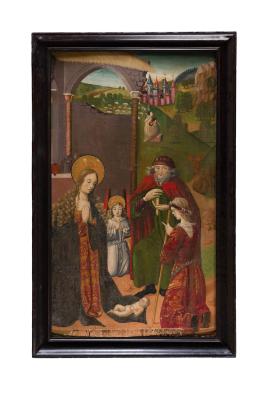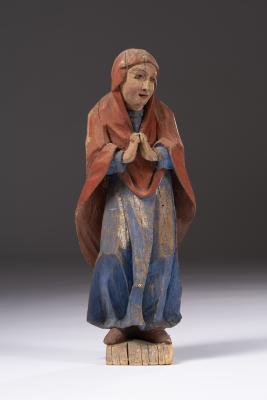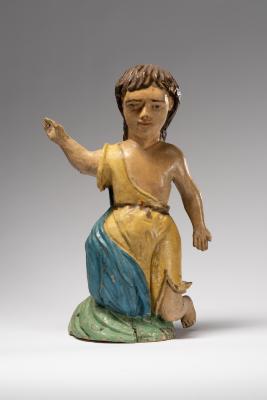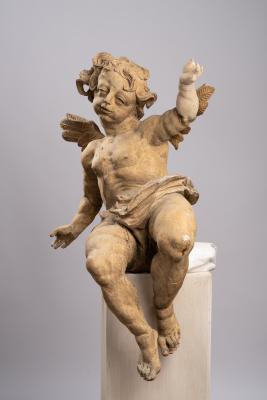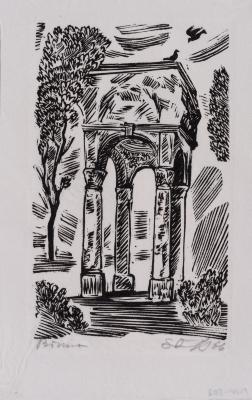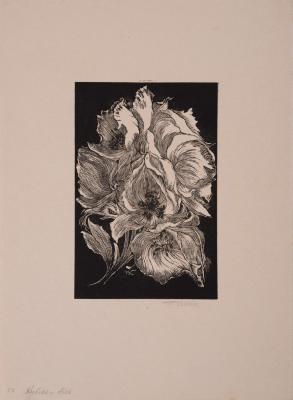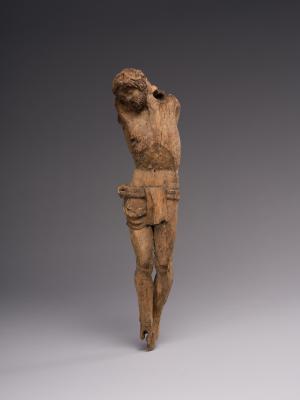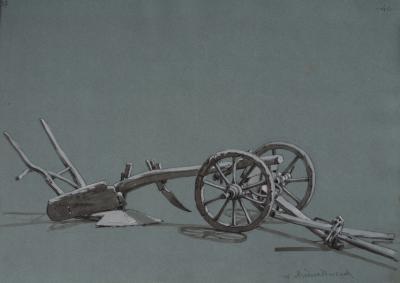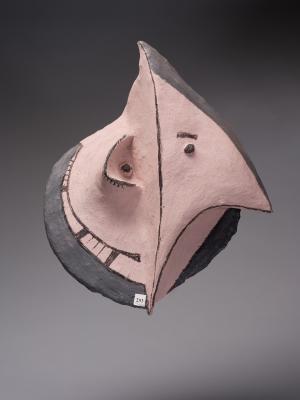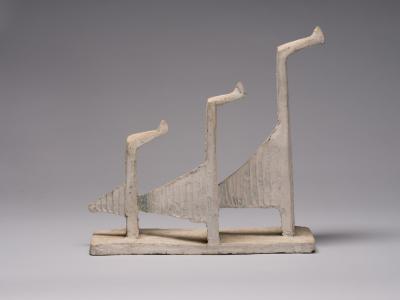The work is from the Neapolitan series. The first known version of the engraving dates back to 1814. In this engraving, one can see a composition that is similar to the Lviv one but presented in a square frame; it was issued in the album Raccolta di Cinquanta Costumi li più interressanti delle città, terre e paesi in provincia diverse del Regno di Napoli (Collection of Fifty Most Interesting Picturesque Costumes from Cities, Towns and Villages of Different Provinces of the Kingdom of Naples) published in Rome in 1814. A composition similar to the Lviv one is known from the album Nuova Raccolta di Cinquanta Costumi (New Collection of Fifty Picturesque Costumes) published in Rome in 1816. In the foreground, one can see a young shepherd and a young woman sitting on a stone; she is dressed in bright national clothes. A sheep and two rams lie quietly between them; they are part of the herd brought to the mountain by a shepherd. He is looking at the beautiful woman with admiration. The woman is turned to the shepherd in a graceful "Greek" profile. She is wearing a red and yellow vest with accentuated sleeve cuffs, a blue apron with lace, and a long blue skirt, under which her red shoe can be seen. There is a light bonnet on her head and several strings of coral beads around her neck. The woman is holding the lace near her knees. There is loose wool and embroidered fabric near her elbow on the stone. The action is taking place in the background of green trees, behind which one of the most majestic peaks of the Apennines is seen.
Cappadocia is a village between the ranges in the heart of the Apennines, on the border of the modern provinces of Lazio and Abruzzo.





